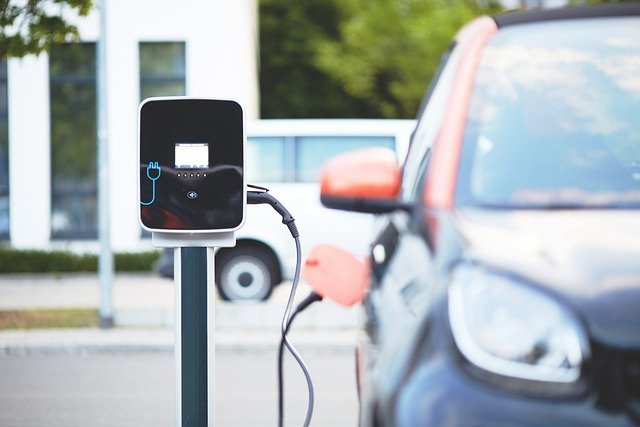Everything You Need to Know About LED Lights for Cars
LED lights have revolutionized automotive lighting, offering superior brightness, energy efficiency, and longevity compared to traditional options. From headlights to interior accent lighting, LED technology provides car owners with enhanced visibility, reduced power consumption, and modern aesthetics. Understanding the different types, installation requirements, and maintenance needs helps drivers make informed decisions about upgrading their vehicle's lighting system.

Modern automotive lighting has undergone significant transformation with the widespread adoption of LED technology. These semiconductor-based lights have become increasingly popular among car enthusiasts and everyday drivers alike, offering numerous benefits over conventional lighting solutions. Whether you’re considering an upgrade or simply want to understand your vehicle’s lighting system better, comprehensive knowledge about LED car lights proves invaluable.
The Advantages of Installing LED Lights in Your Vehicle
LED lights offer compelling benefits that make them an attractive choice for automotive applications. Energy efficiency stands as one of their most significant advantages, consuming up to 80% less power than traditional incandescent bulbs while producing comparable or superior light output. This reduced power consumption translates to less strain on your vehicle’s electrical system and improved fuel efficiency.
Durability represents another key advantage, with quality LED lights lasting 25,000 to 50,000 hours compared to 1,000-2,000 hours for halogen bulbs. This longevity reduces replacement frequency and maintenance costs over time. LED lights also produce minimal heat, reducing the risk of lens damage or housing deterioration that can occur with high-temperature traditional bulbs.
The instant illumination capability of LEDs provides enhanced safety benefits, reaching full brightness immediately without warm-up time. This feature proves particularly valuable for brake lights and turn signals, where immediate visibility can prevent accidents.
Choosing LED Lights for Your Car: A Complete Guide
Selecting appropriate LED lights requires consideration of several factors including compatibility, brightness requirements, and intended application. Start by identifying your vehicle’s specific bulb types and socket configurations, as LEDs must match these specifications for proper installation.
Color temperature plays a crucial role in both functionality and aesthetics. Measured in Kelvin (K), lower temperatures (3000K-4000K) produce warm, yellowish light similar to halogen bulbs, while higher temperatures (5000K-6500K) create cool, white light that enhances visibility and provides a modern appearance.
Lumen output determines brightness levels, with higher lumens producing more light. However, extremely bright LEDs may cause glare for oncoming drivers or violate local regulations, making it essential to balance brightness with safety and legal compliance.
Quality certifications such as DOT (Department of Transportation) approval ensure products meet safety standards and legal requirements for road use.
LED Lights vs. Halogen and Xenon: What’s the Difference?
Understanding the distinctions between LED, halogen, and xenon lighting technologies helps inform upgrade decisions. Halogen bulbs, the traditional automotive standard, use tungsten filaments heated by electrical current to produce light. While inexpensive and widely compatible, they generate significant heat, consume more power, and have shorter lifespans.
Xenon (HID) lights create illumination through electrical discharge in xenon gas, producing bright, white light with good efficiency. However, they require ballasts for operation, have longer warm-up times, and can be more expensive to replace than LEDs.
LED technology surpasses both alternatives in efficiency, longevity, and versatility. While initial costs may be higher, the extended lifespan and reduced power consumption often result in lower total ownership costs.
| Light Type | Lifespan (Hours) | Power Consumption | Initial Cost | Brightness (Lumens) |
|---|---|---|---|---|
| Halogen | 1,000-2,000 | 55-65W | $10-25 | 1,000-1,500 |
| Xenon/HID | 2,000-3,000 | 35W | $50-150 | 2,800-3,500 |
| LED | 25,000-50,000 | 15-25W | $30-200 | 1,500-4,000 |
Prices, rates, or cost estimates mentioned in this article are based on the latest available information but may change over time. Independent research is advised before making financial decisions.
LED Car Lights: Pricing and How to Find Deals
LED car light pricing varies significantly based on application, quality, and brand reputation. Basic interior LED bulbs typically range from $5-20 per bulb, while premium headlight conversion kits can cost $100-300 or more. Specialty applications like underglow kits or custom accent lighting may range from $50-500 depending on complexity and features.
When seeking deals, consider purchasing complete kits rather than individual bulbs, as bulk pricing often provides better value. Online retailers frequently offer competitive pricing compared to brick-and-mortar stores, though local automotive shops may provide installation services and warranty support.
Seasonal sales, particularly during automotive trade shows or holiday periods, often present opportunities for significant savings. However, prioritize quality and compatibility over price alone, as inferior products may fail prematurely or cause electrical issues.
Installation Tips and Maintenance for LED Car Lights
Proper installation ensures optimal performance and longevity of LED car lights. Begin by consulting your vehicle’s manual to identify correct bulb types and access procedures. Disconnect the battery before beginning work to prevent electrical shorts or damage.
Many LED replacements install directly into existing sockets, making the process straightforward for basic applications. However, some installations may require additional components such as load resistors to prevent hyperflashing in turn signals or error messages in vehicles with bulb monitoring systems.
For headlight conversions, ensure proper beam alignment after installation to prevent glare issues for oncoming traffic. Professional installation may be advisable for complex conversions or if you’re uncomfortable working with automotive electrical systems.
Maintenance requirements for LED lights are minimal compared to traditional bulbs. Periodic cleaning of lenses and housings maintains optimal light output, while visual inspections can identify any loose connections or moisture intrusion that might affect performance.
LED car lights represent a significant advancement in automotive lighting technology, offering numerous advantages over traditional alternatives. While initial costs may be higher, the combination of improved efficiency, longevity, and performance makes them an excellent investment for most vehicle owners. Proper selection, installation, and maintenance ensure you’ll enjoy the benefits of LED lighting for years to come.




